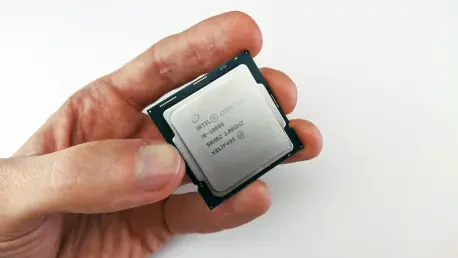The ongoing saga of cybersecurity vulnerabilities has brought Intel CPUs back into focus, renewing concerns over their security shortcomings. Recently uncovered flaws have emphasized the persistent nature of these issues, many of which trace their roots to the notorious Spectre vulnerability identified in the past. Researchers from ETH Zürich have shed new light on a flaw termed Branch Privilege Injection (BPI), a mechanism capable of unauthorized access to sensitive information within Intel processors. This vulnerability exploits CPU prediction mechanisms with intricate detail involving Branch Predictor Race Conditions (BPRC). This potentially allows attackers to infiltrate the boundaries that should protect privileged data. Intel has responded with microcode patches aimed at resolving this newly identified flaw, labeled CVE-2024-45332, carrying a CVSS v4 score of 5.7. While this might seem like another technical hurdle, the larger narrative suggests an industry constantly playing catch-up to the fast-paced advancements of malicious actors.
New Forms of Threat: Spectre-Inspired Attacks
Further advancements in attack methodologies have emerged from research efforts at Vrije Universiteit Amsterdam, showcasing innovative approaches to exploit Intel’s CPU architecture. The introduction of self-training Spectre v2 attacks, branded Training Solo, reflects a sophisticated method of penetrating Intel CPUs, resulting in successful leaks of kernel memory. These recent developments offer alarming insights, highlighting severe possibilities for domain isolation breaches. This modern adaptation of classic Spectre v2 scenarios manifests in flaws designated as CVE-2024-28956 and CVE-2025-24495. The former specifically impacts various Intel Core and Xeon processors, while the latter extends its reach to CPUs featuring the Lion Cove core. The severity of these flaws is signaled by their CVSS v4 scores, which are 5.7 and 6.8, respectively. The revelation of these vulnerabilities represents a significant challenge for developers and manufacturers as they navigate the intricate landscape of ensuring processor security, underscoring the necessity for ongoing commitment to developing robust countermeasures.
Industry Response and Mitigation Efforts
In response to these vulnerabilities, Intel has actively pursued updates to its microcode, showcasing a commitment to protecting users from potential exploitation. Meanwhile, AMD has revised its guidance on Spectre and Meltdown vulnerabilities, drawing attention to risks associated with classic Berkeley Packet Filter (cBPF) usage. Despite these corrective measures, the fundamental challenge remains to defend against speculative execution attacks, a complex issue that has blurred traditional hardware security lines. This ongoing evolution in threat landscapes calls for a dynamic approach to security, one that anticipates potential weaknesses. It also demands collaboration across the tech industry to develop innovative solutions for these seemingly intractable issues. The urgency reflected in these efforts is a testament to an industrywide consensus on prioritizing security to fortify processor environments against persistent and evolving threats.
The Path Forward: Securing Today’s CPUs
Once again, cybersecurity vulnerabilities have cast shadows over Intel CPUs, reviving concerns about their security pitfalls. Recently exposed issues highlight the enduring nature of these vulnerabilities, many tracing back to the infamous Spectre flaw discovered years prior. Notably, researchers at ETH Zürich have identified a new vulnerability called Branch Privilege Injection (BPI). This flaw can potentially lead to unauthorized access to sensitive data within Intel processors. It takes advantage of CPU prediction mechanisms, specifically targeting Branch Predictor Race Conditions (BPRC), enabling attackers to breach areas meant to protect privileged data. Intel has released microcode patches to counteract this newly detected vulnerability, identified as CVE-2024-45332, with a CVSS v4 score of 5.7. While this might seem another technical difficulty, the broader picture signals an industry perpetually striving to stay ahead of rapidly evolving cyber threats posed by malicious entities.









